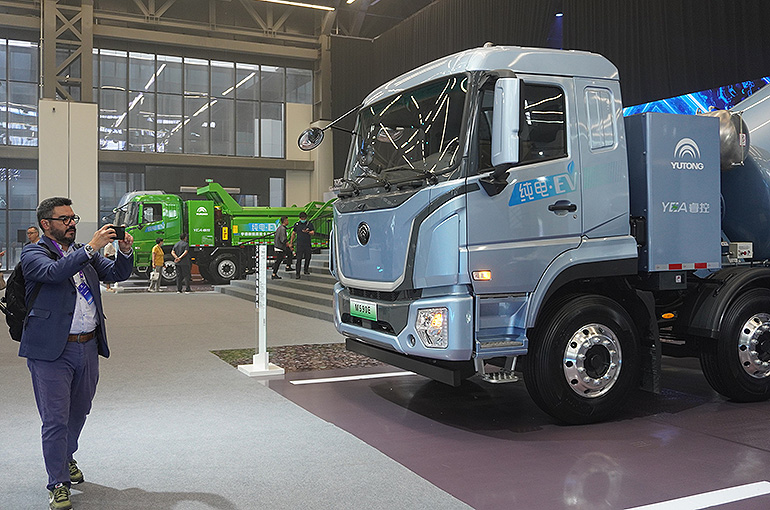 More Needs to Be Done to Boost China’s New Energy Commercial Auto Sector, Researcher Says
More Needs to Be Done to Boost China’s New Energy Commercial Auto Sector, Researcher Says(Yicai) Aug. 21 -- China’s market for new energy commercial vehicles, which are autos that transport goods or people for commercial purposes, lags five to 10 years behind that of electric passenger cars. More measures are urgently needed to support the zero-emission commercial vehicle sector in order to realize carbon neutrality, a researcher at an industry body said.
The penetration ratio of new energy commercial vehicles was just 11.3 percent in June, and that of heavy-duty electric trucks only 5.7 percent, according to data from an industry association.
By contrast, China’s new energy passenger vehicle market is the biggest in the world, accounting for 36.1 percent of car sales in July, a jump of 9.3 percentage points from the year before.
New policies are needed that will channel more money into research and development, Wu Yanjie, a senior researcher at the China Society of Automotive Engineers' AISI, told Yicai. There are many factors holding back the new energy commercial auto sector, especially the price as they cost a lot more than fossil fuel-powered ones.
Buyers need to feel enthusiastic about buying a new energy commercial vehicle and believe that it is cost effective, Wu said.
Aside from the price, the energy density of existing batteries cannot meet the needs of long-range heavy-duty transport, they are not able to carry as much tonnage and there are high battery depreciation costs as well as longer battery charging and swap times, Wu said.
For the same type of auto, the new energy-powered version is heavier than the diesel version, said Wu. For example, an all-electric towing vehicle of 282 kilowatt hours is two tons heavier than a conventional gasoline-powered truck.
After the government eased curbs last year, allowing more electric and hydrogen trucks on the roads for longer, quite a few companies are now planning to expand their new energy fleets into the double digits or even triple digits, a senior manager at a green logistics technology services provider, told Yicai.
New energy heavy-duty trucks' penetration ratio should be over 10 percent by 2025 and near 50 percent by 2030, said Ouyang Minggao, a member of the Chinese Academy of Sciences and a professor at Tsinghua University. This is the same as in Europe.
Editors: Shi Yi, Kim Taylor